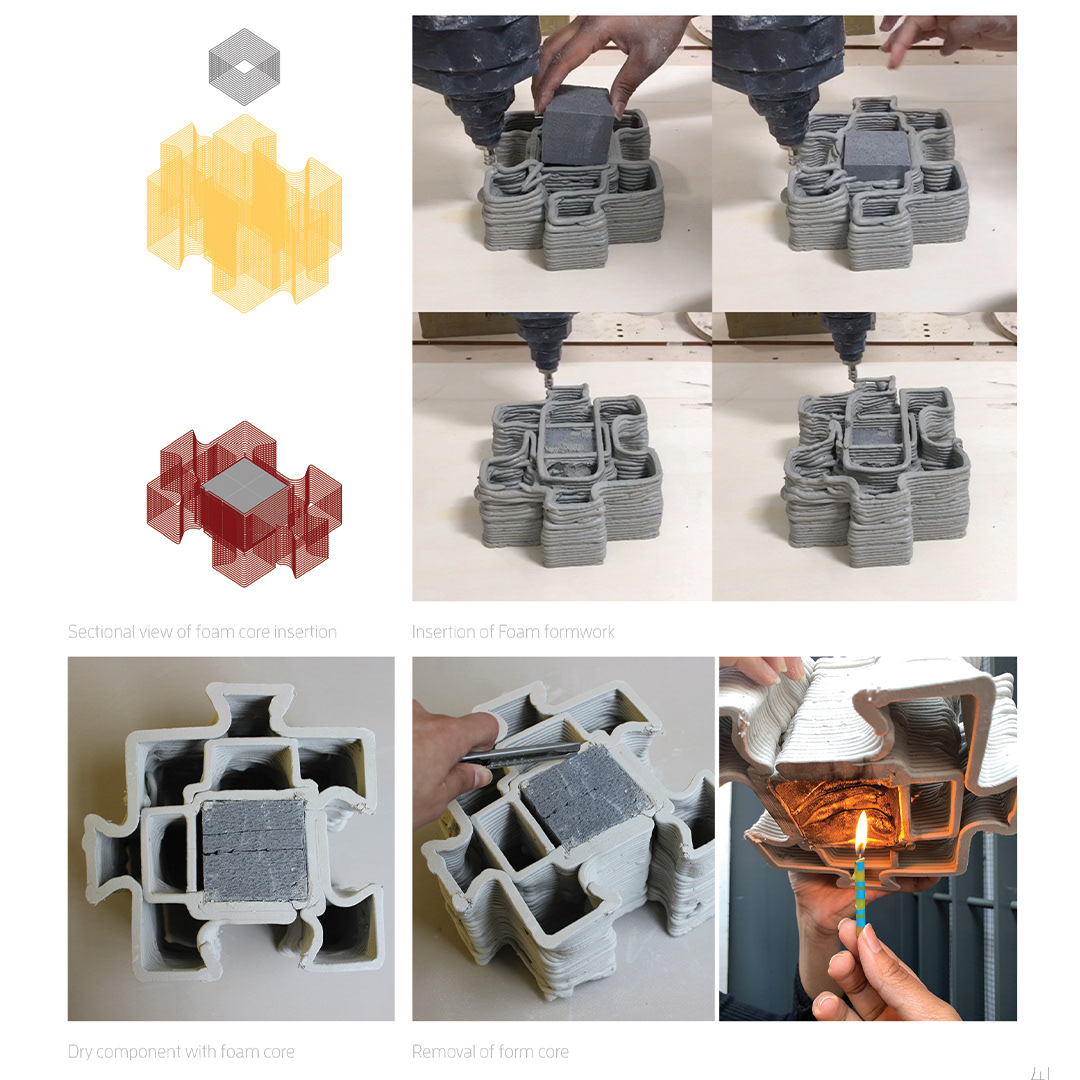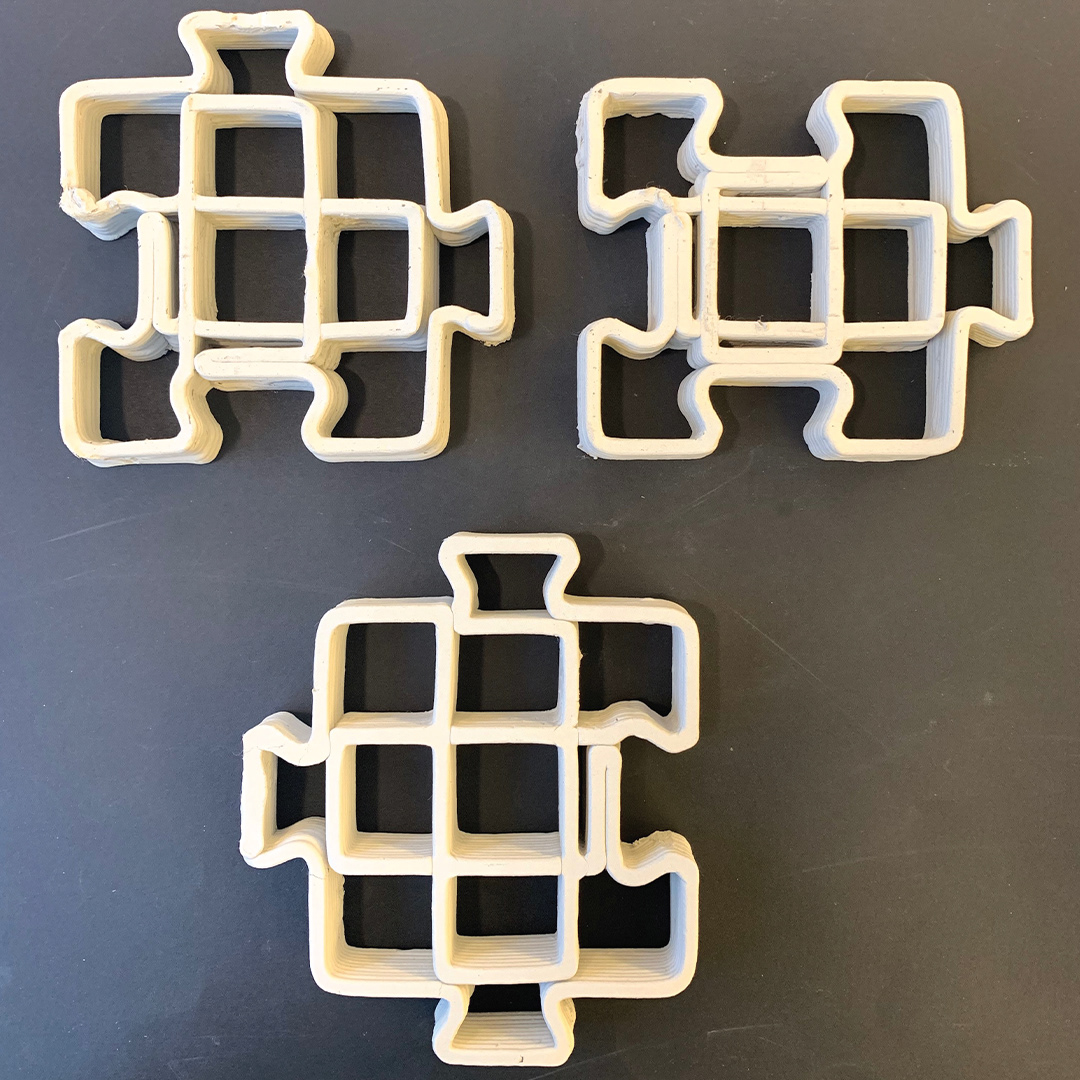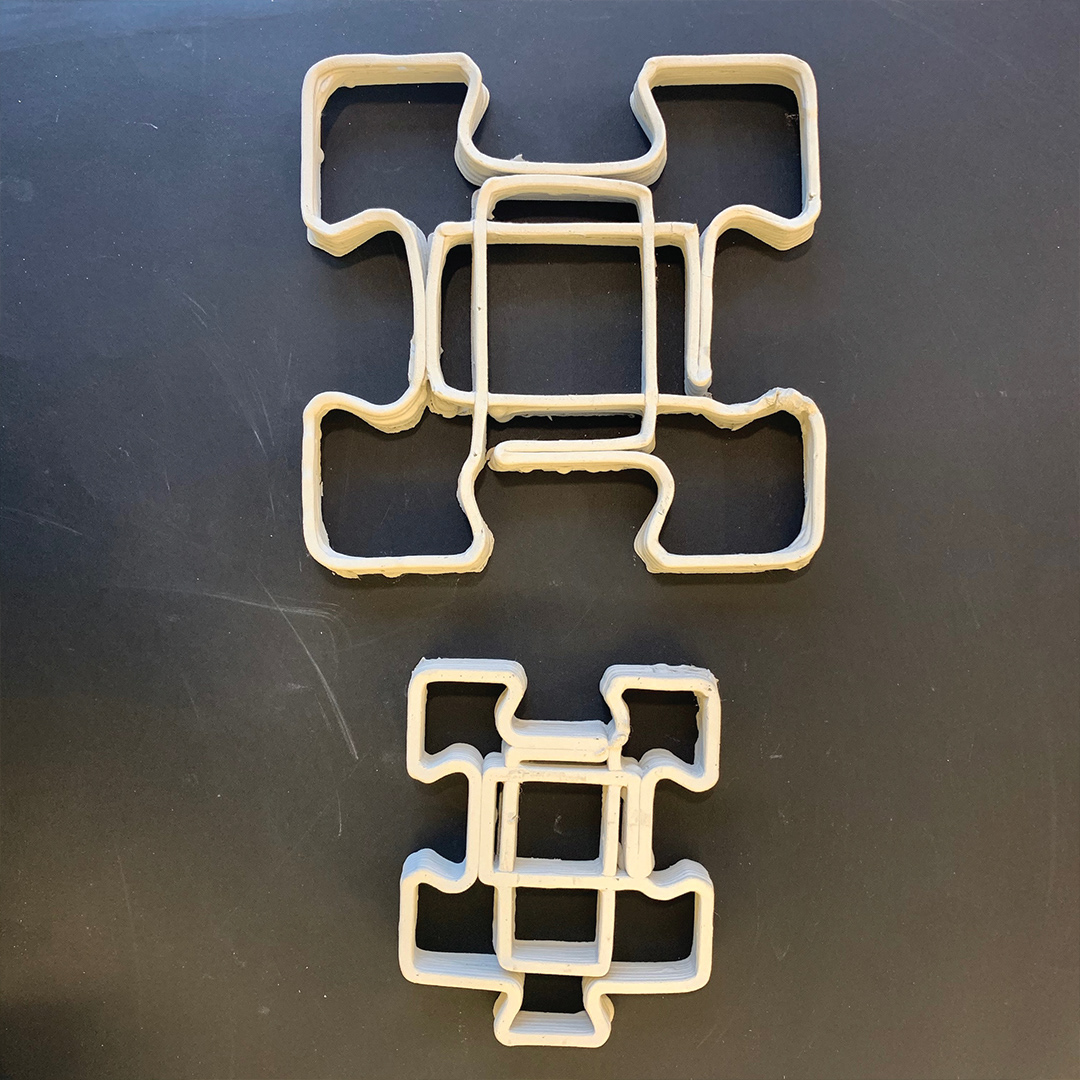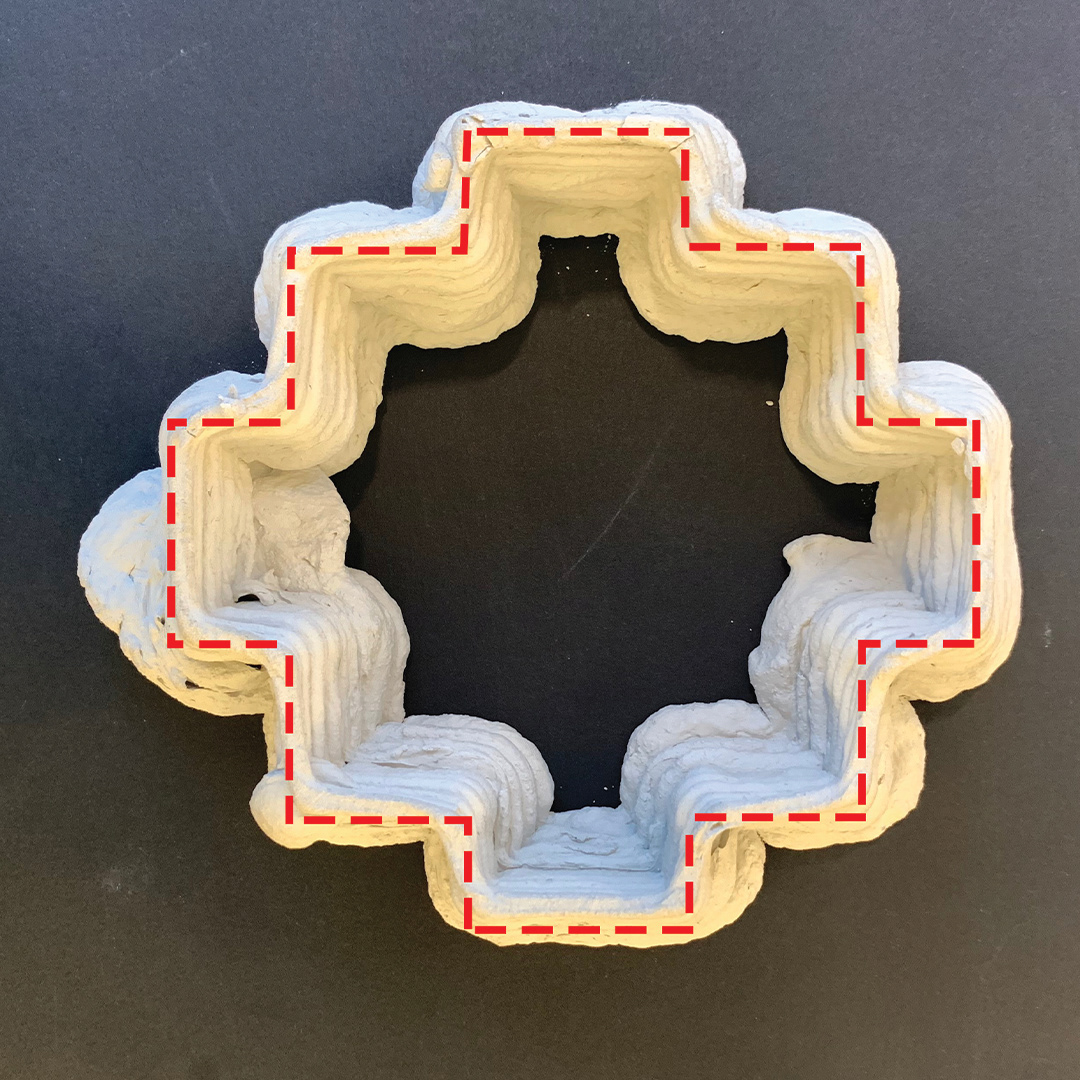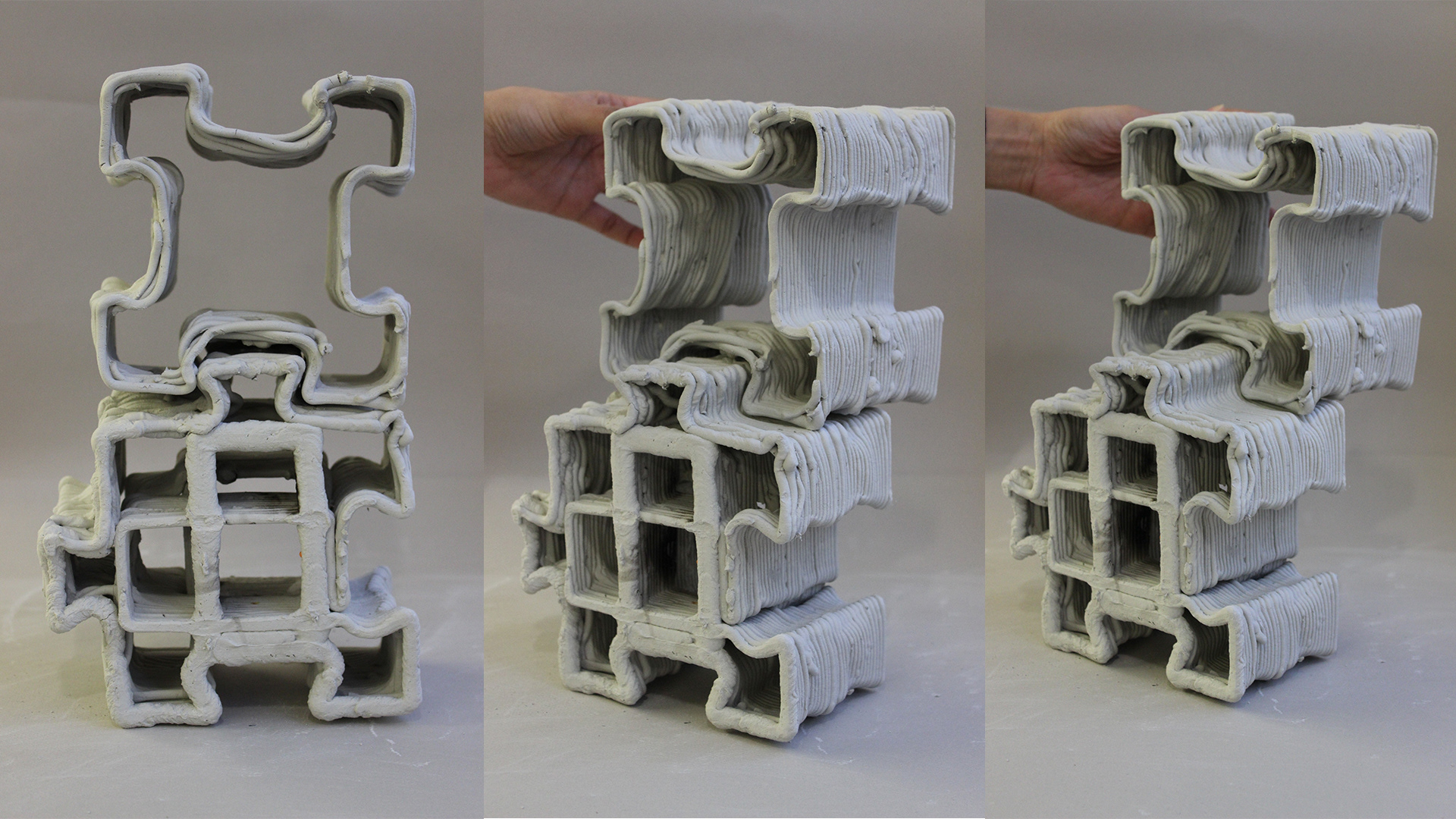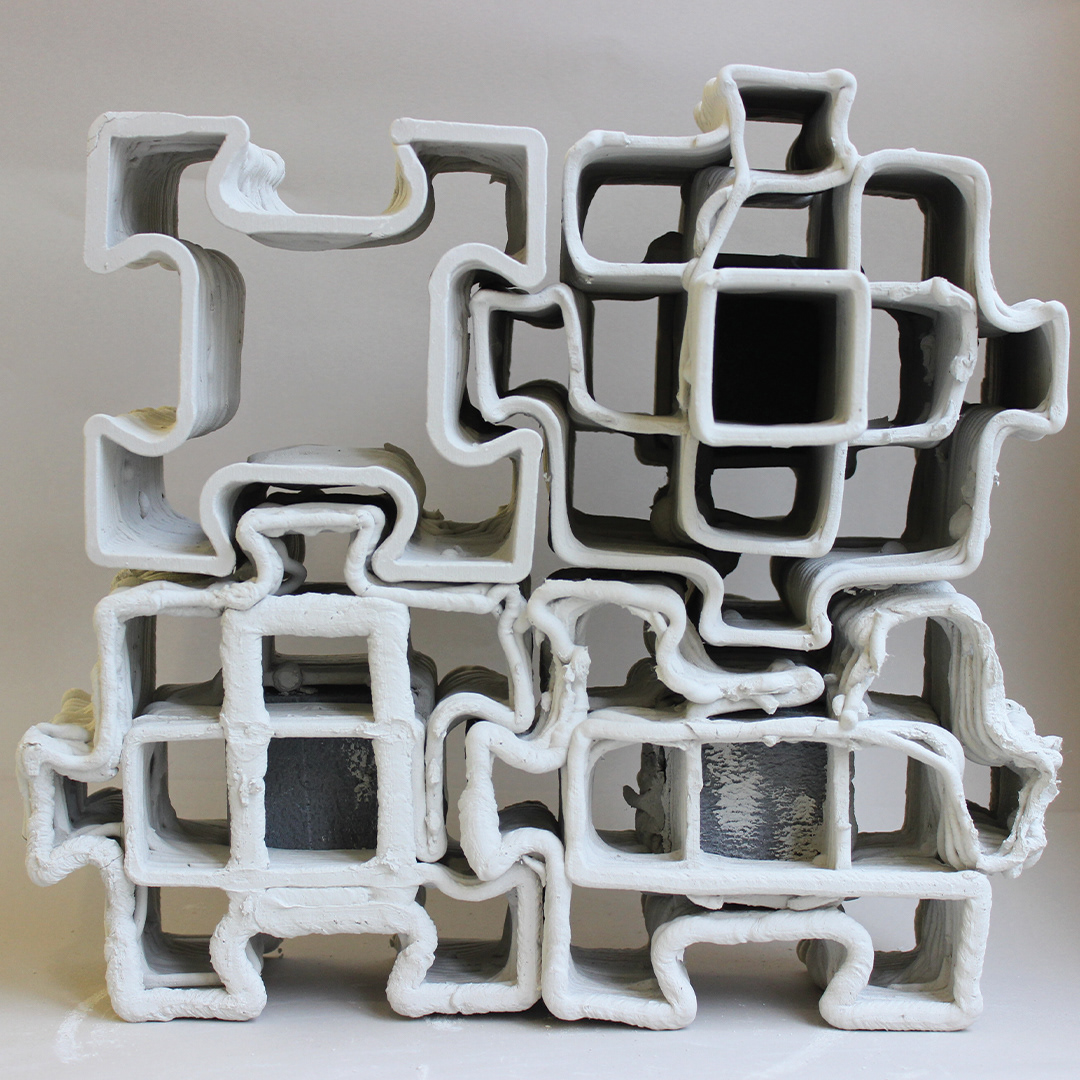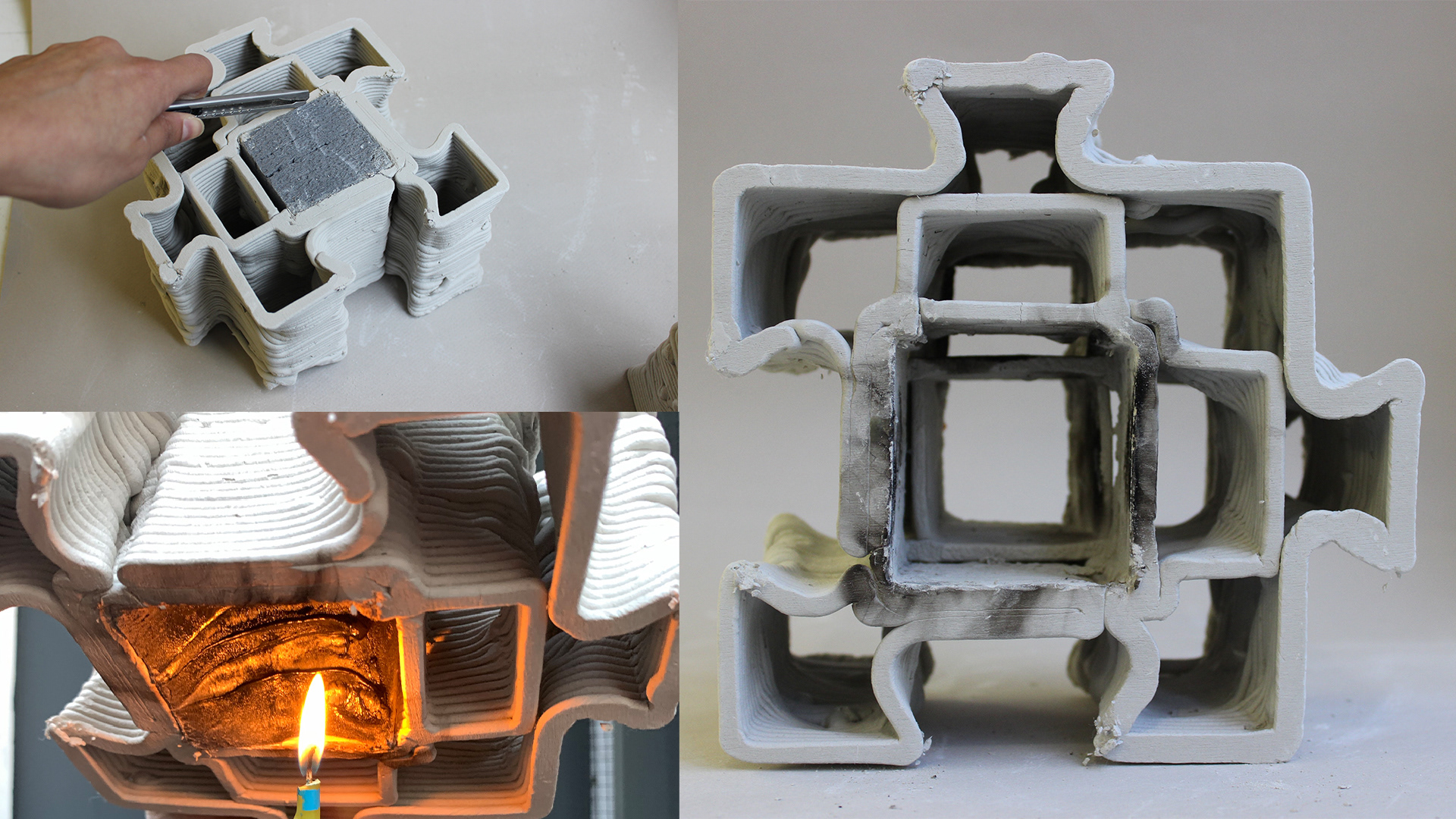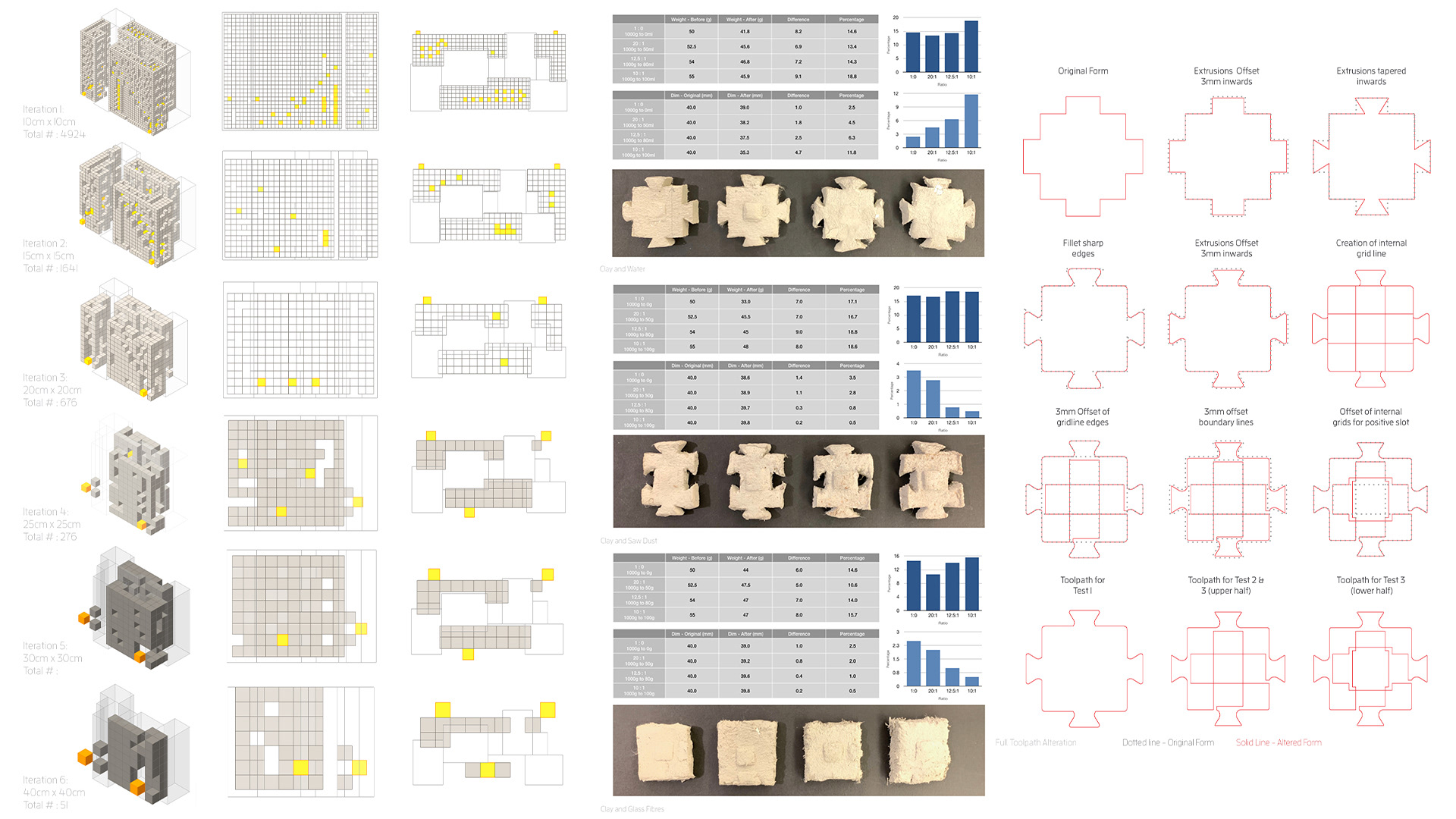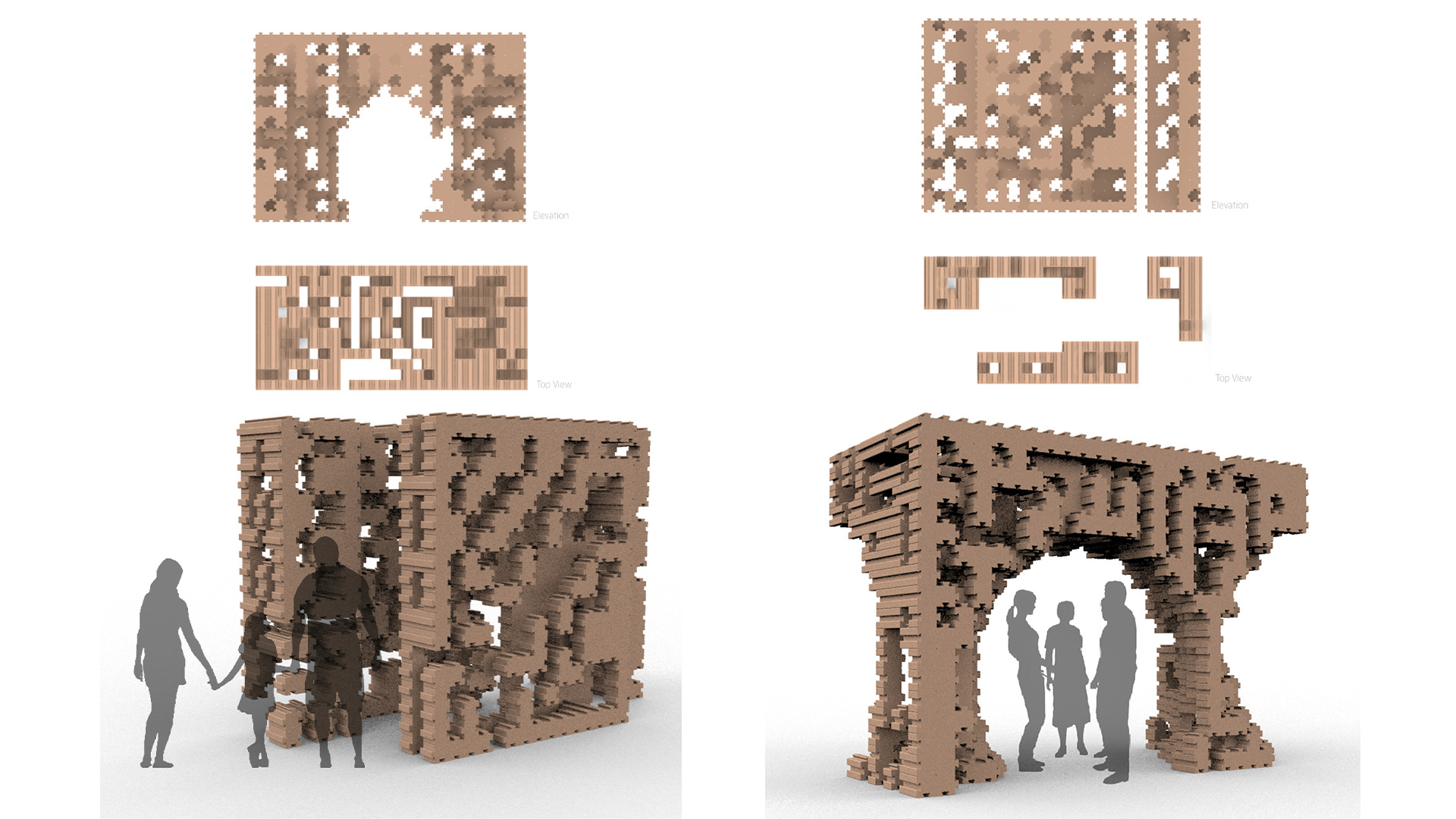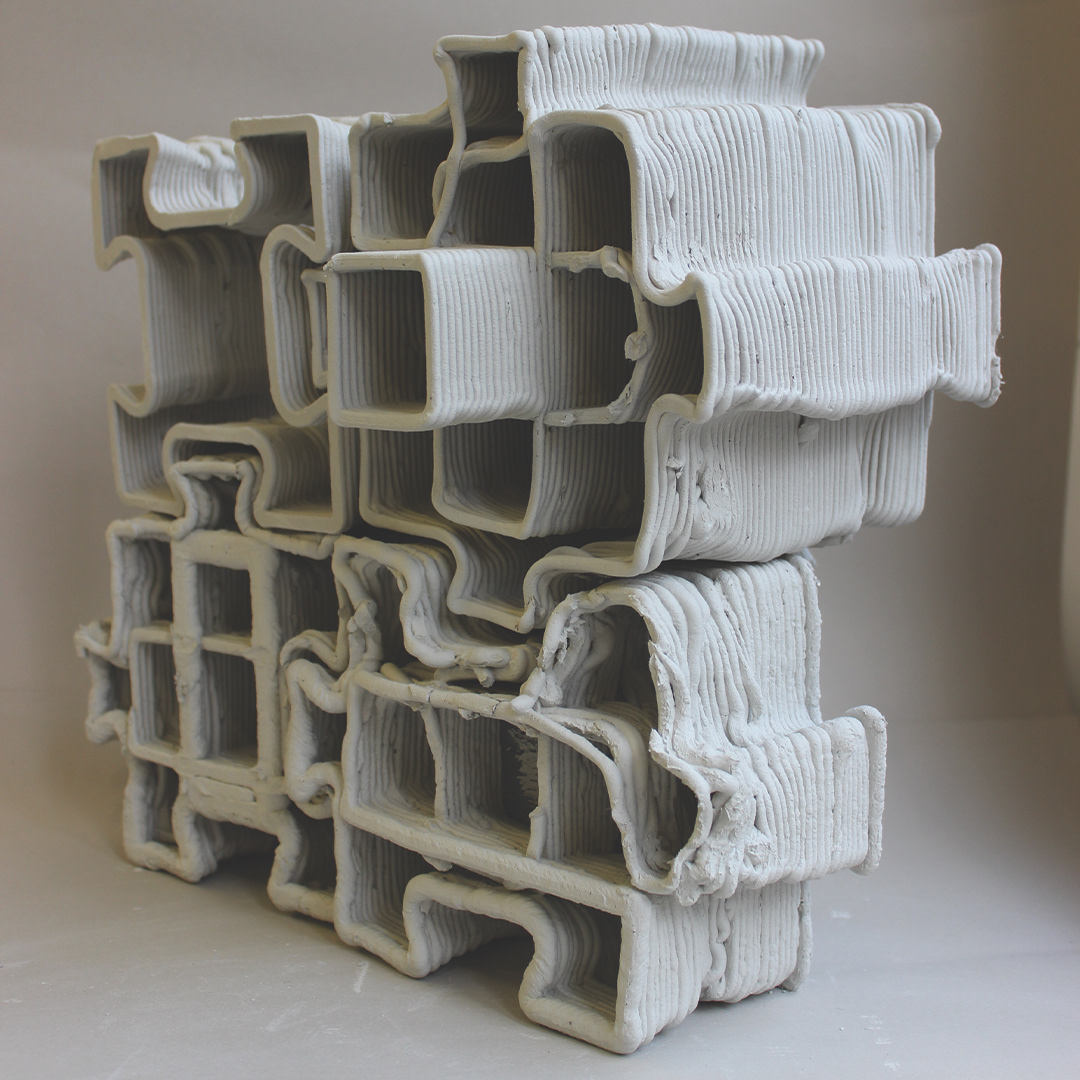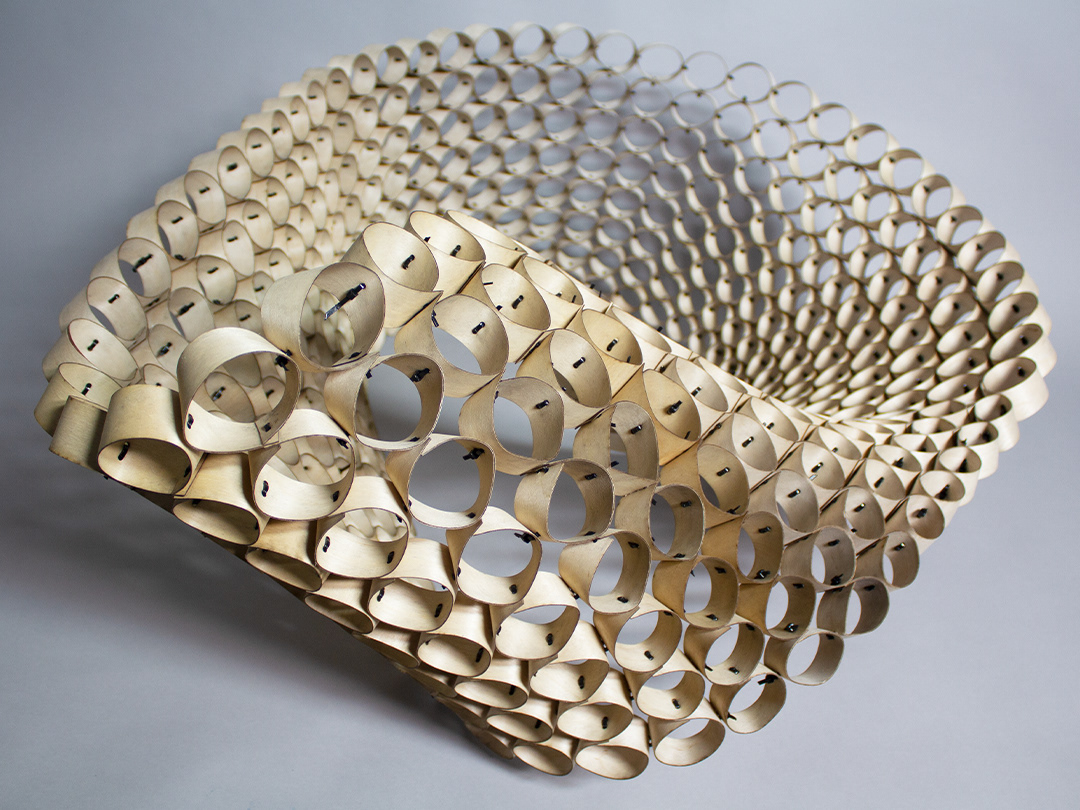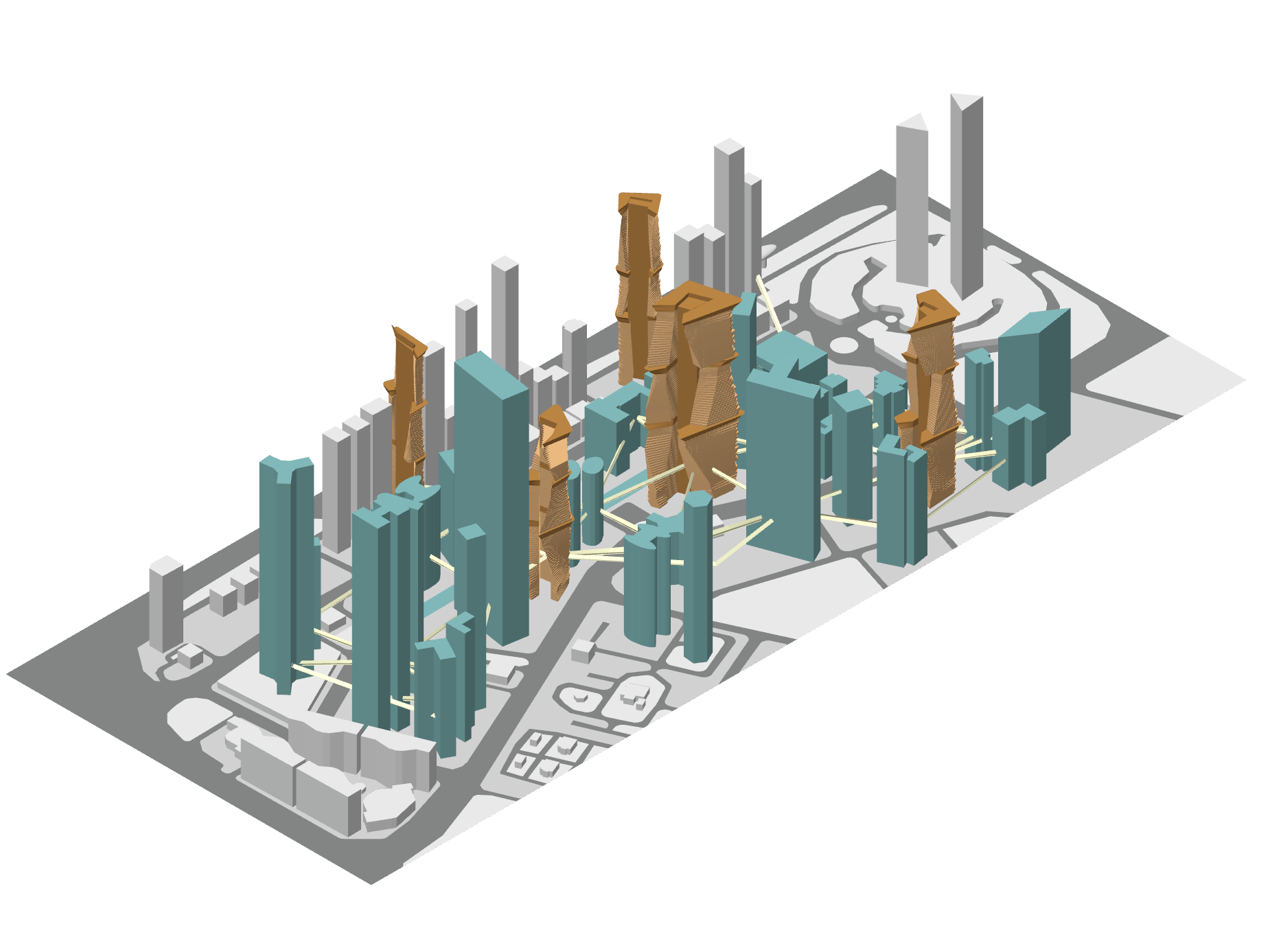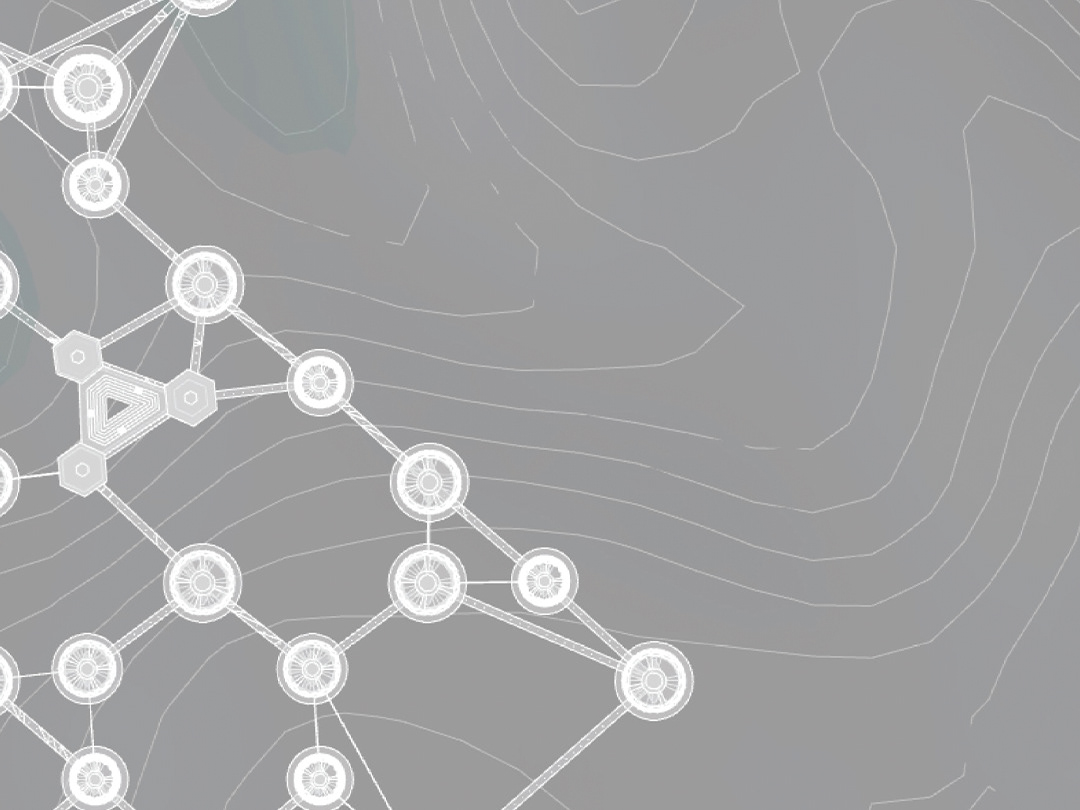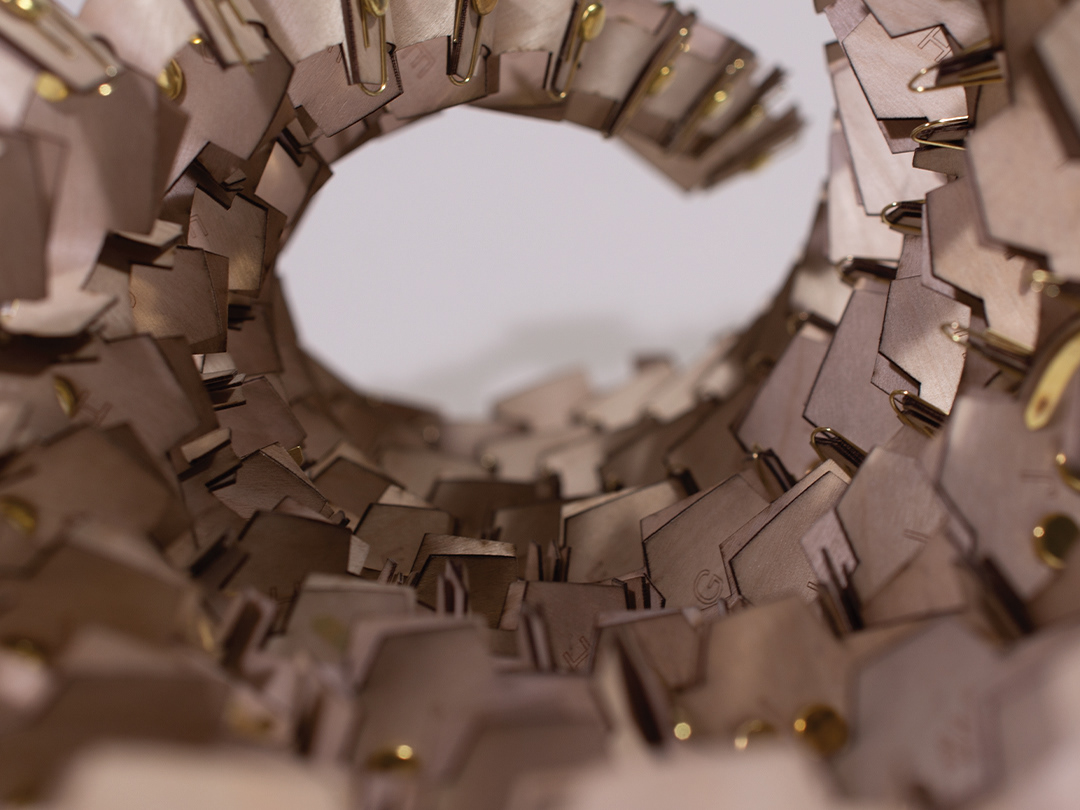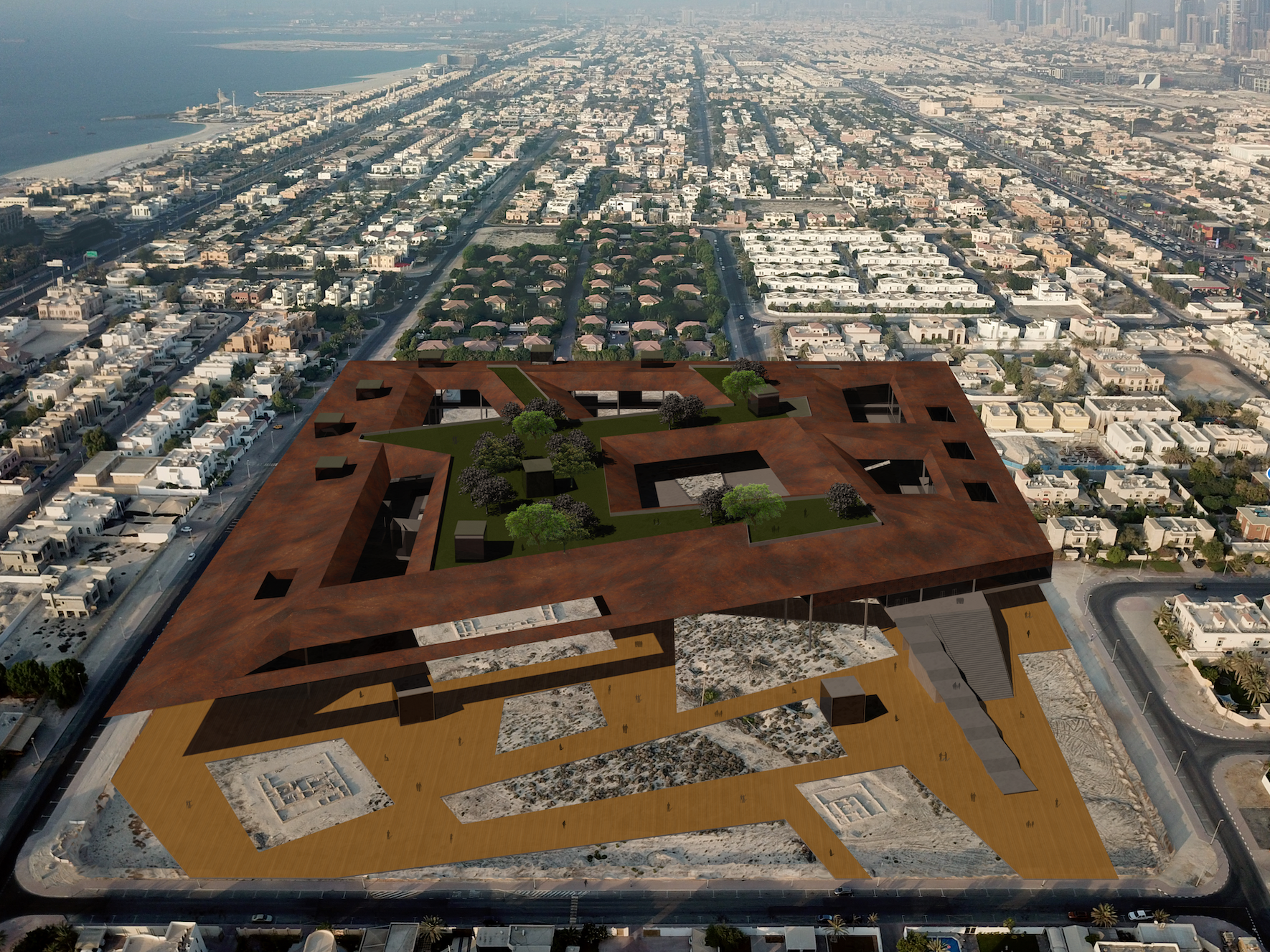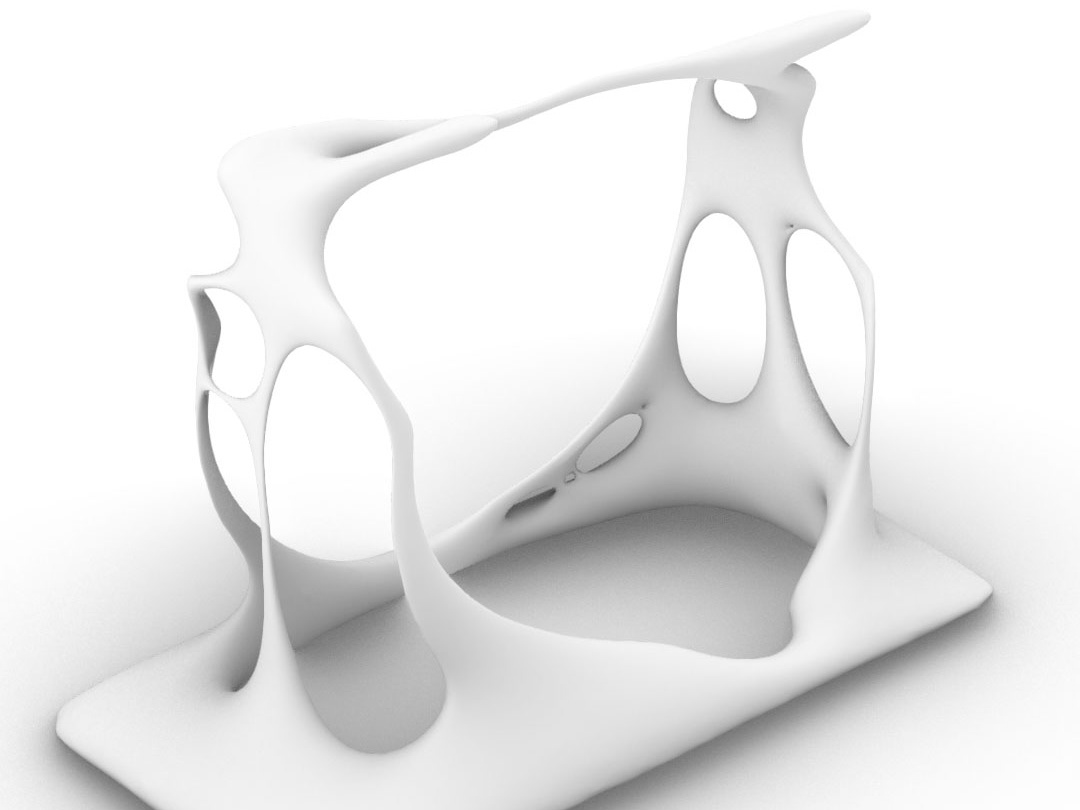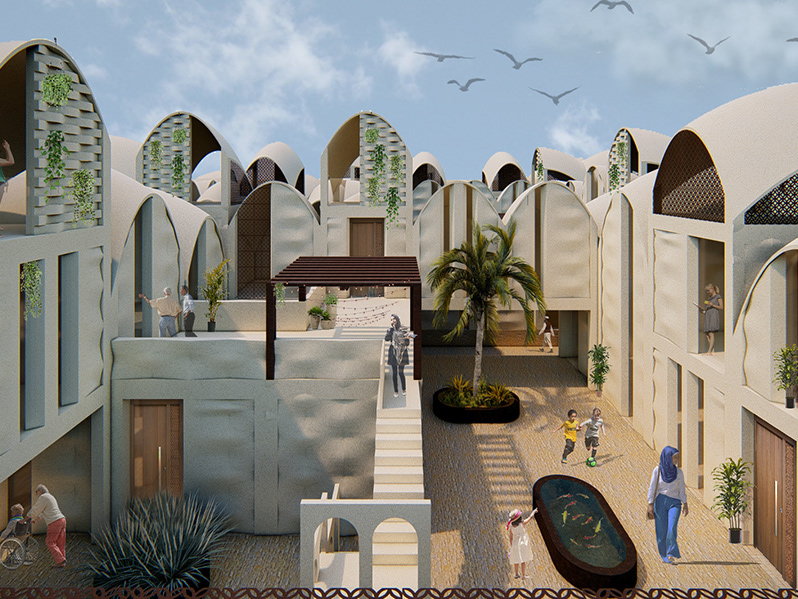Group Parter: Dhwani Bisani
Master of Architecture in Emergent Technologies and Design
Architectural Association School of Architecture
The final form taken form cellular automata program was chosen to create a pavilion out of. Scripting and coding for this computational system was completed in Grasshopper and Python.
During the initial stages, multiple pavilion designs were generated in order to select one iteration to experiment further with. Interlocking modules and 3D printed blocks were also researched in order to streamline our local geometry design process. 6 different local geometry types, that were inspired by puzzle pieces, were designed which could be used to create a pavilion with varying modules. Whilst sorting these elements we realised that one of the components could be used overall.
Whilst local geometries robotic toolpaths were getting perfected, material tests were conducted to test strength, consistencies, and the possible addition of additives such as saw dust, glass fibres and more. These individual tests were conducted to determine which would result in the least shrinkage and be the strongest.
Once a consistency that was suitable and the addition of additives was analysed, final tests were conducted with the altered local geometry tool paths. The final components generated were analysed for strength, precision, accuracy and ability to slot in with the other elements.
